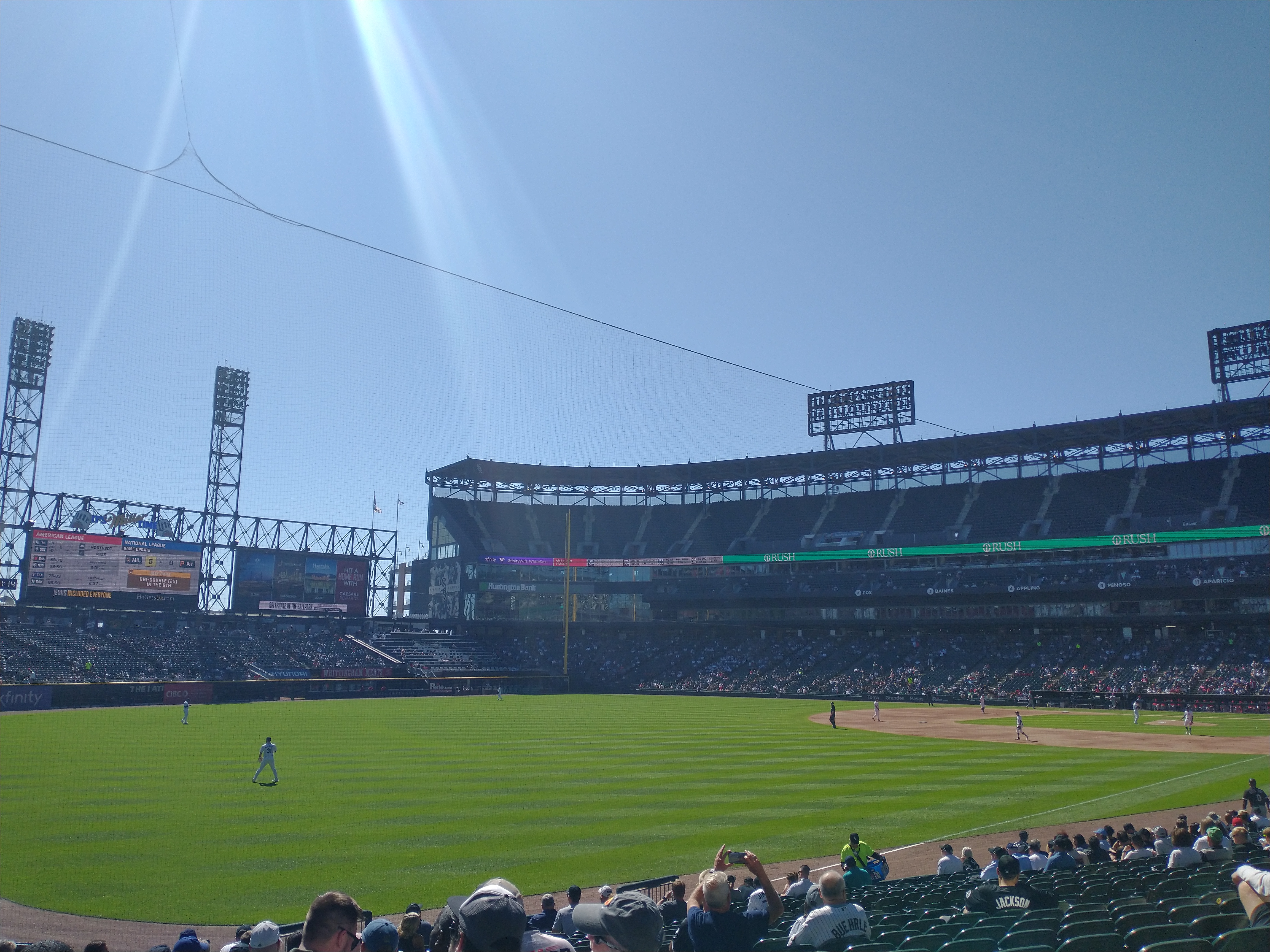How will the team respond to its failing performance?
The Chicago White Sox experienced a record-breaking season this past year, worthy of no applause.
The team broke Major League Baseball’s 62-year-old record for the most losses suffered during a season, dropping 121 games and statistically becoming the worst team in recent history. Providing an uninspiring on-field product for fans, the team also failed to fill seats at Guaranteed Rate Field, with attendance down by more than 18% during the season.

Fans watch the Chicago White Sox play. Photo by Alex Carrasquillo
Images of nearly empty home games gained traction across social media sites, and in the final games of the season, chants to “sell the team” rang across the stadium, accompanied by fan-made signs with the slogan.
According to The Athletic, longtime owner Jerry Reinsdorf is now “open to selling” the team after years of vowing to maintain his position as chairman.
A change in ownership may prompt relocation, as Reinsdorf is reportedly in “active discussions” with a purchasing group led by former major league pitcher Dave Stewart, who has publicly petitioned for an MLB expansion team in Nashville.
Whether Reinsdorf sells or the team relocates, roster construction remains a challenge amid poor on-field play. This past season, the White Sox had the 18th-highest payroll in the MLB at $133.8 million. This week’s World Series matchup — Dodgers v. Yankees — featured two of the top five payrolls, with Los Angeles spending $241 million and New York spending $309 million.
A business just as much as a game, the MLB is the only major American or Canadian professional sport with no salary cap. Such great financial freedom influences competition as teams can spend unlimited amounts on attaining star players — so long as they have the money. Big-market teams, such as the Dodgers and Yankees, often attract top talent due to their high revenue, while small-market teams, such as the Cincinnati Reds, struggle to compete financially during free agency.
Although the White Sox play in a top-three media market, their ownership is committed to spending less next season.
“We’re not going to be working heavy in free agency,” said general manager Chris Getz during a team broadcast appearance in September.
Three seasons ago, the team finished first in its division and had the fourth-best record in baseball — having its season end in the first round of the postseason to the Houston Astros. The following year, 2022, injuries plagued the roster, and in late August, manager Tony LaRussa departed the clubhouse, citing health problems. He never returned — officially retiring before the season ended — and the team finished with an 81-81 record under interim manager Miguel Cairo. Two losing seasons later, the White Sox find themselves again searching for a manager as they finished out this past season under interim manager Grady Sizemore, following the firing of Pedro Grifil.
The search for stability within this organization extends beyond coaching, however.
Over a month ago, the team constructed a “pop-up” field on the infamous vacant lot in the South Loop, known as “The 78.” According to the Chicago Sun-Times, legislators, business leaders and other VIP guests were invited on a downtown riverboat excursion to tour the site — which sits along the Chicago River and faces the city’s iconic skyline.
Named for its potential to become the 78th neighborhood in the city, Reinsdorf wants to develop part of this 62-acre lot into a new stadium for the team. The proposed development has been met with harsh criticism as Reinsdorf is pushing for about $1 billion in public funding for the project, including a tax-increment financing district, an extension of the 2% hotel tax increase (used to renovate Soldier Field), and a new sales tax overlay district around the development.
Some fans believe Reinsdorf leaked the recent news of his interest in selling the team as a ploy to receive more funding for the proposed South Loop ballpark. In the early 1980s, Reinsdorf threatened to move the White Sox to St. Petersburg, Florida, if Illinois state lawmakers didn’t fund a new stadium. He then received $200 million in public funding to build the team’s present-day stadium, which opened in 1991.
“A savvy negotiator creates leverage,” said Reinsdorf in a 1995 article, reflecting on the negotiation. “People had to think we were going to leave Chicago.”
Coming off a historically bad season and a decade of mediocrity — the team has only had two winning seasons since 2014 — Reinsdorf believes that a new stadium would help the White Sox become a competitor.
“The economics of baseball have completely changed,” Reinsdorf said. “At the location we’re at now, we cannot generate the revenue needed to pay those salaries.”
If the team continues to play losing baseball, stadium attendance and TV viewership will remain low — resulting in a loss of revenue. A new stadium may initially draw crowds, but lackluster play will not sustain attention; especially during a 162-game season. And so, there’s a web of dependency between the fans, the players and ownership — in which the team’s success is determined. The White Sox currently face an implosion of their web, and how they respond remains pending.
Header by Alex Carrasquillo




NO COMMENT